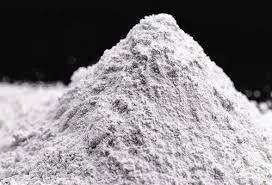
Dec . 17, 2024 00:07 Back to list
hpmc hydroxypropyl methyl cellulose
Understanding HPMC Hydroxypropyl Methyl Cellulose
Hydroxypropyl Methyl Cellulose (HPMC) is a multifunctional compound widely utilized in various industries, particularly in pharmaceuticals, food, and construction. As a semi-synthetic polymer derived from cellulose, HPMC boasts unique properties that make it highly versatile, including its ability to form gels, thickening capabilities, and compatibility with a range of other substances.
Chemical Structure and Properties
HPMC is produced by chemically modifying cellulose, specifically through the introduction of hydroxypropyl and methyl groups to the cellulose backbone. This modification enhances its solubility in water, allowing for the formation of clear solutions. HPMC is non-ionic, which means it does not contain fixed charges; thus, it is less likely to interact adversely with other ionic substances, providing a stable environment for formulation processes.
The viscosity of HPMC solutions can be adjusted based on the degree of substitution of hydroxypropyl and methyl groups. This feature is beneficial as it allows manufacturers to tailor the viscosity of HPMC according to the specific requirements of applications—ranging from thickening agents in food to controlled-release formulations in pharmaceuticals.
Applications in Pharmaceuticals
In the pharmaceutical industry, HPMC is primarily utilized as an excipient. It serves multiple functions, including acting as a binder, coating agent, and film former. As a binder, HPMC promotes the adhesion of particles in tablets, ensuring structural integrity during manufacturing and storage. Its film-forming properties make it an excellent choice for enteric coatings, protecting active ingredients from digestive acids while facilitating targeted release in the intestines.
Moreover, HPMC is widely employed in controlled-release formulations. By adjusting the viscosity and molecular weight of HPMC, formulators can design drug delivery systems that control the rate of drug release, enhancing therapeutic efficacy and patient compliance. This feature is particularly evident in various dosage forms, including tablets, capsules, and suspensions.
hpmc hydroxypropyl methyl cellulose

Role in Food Products
The food industry benefits significantly from HPMC's thickening, emulsifying, and stabilizing properties. HPMC is commonly used in gluten-free formulations, where it improves the texture and mouthfeel of baked goods. It acts as a stabilizer in sauces and dressings, preventing the separation of ingredients and enhancing the overall quality of food products.
Furthermore, HPMC is recognized for its role as a fat replacer, offering reduced calorie options while maintaining desired texture and flavor profiles. This application is particularly appealing to health-conscious consumers seeking to lower fat intake without compromising on taste.
Contribution to Construction and Other Industries
In the construction industry, HPMC is valued for its water-retention properties and ability to enhance the workability of cement and mortar mixtures. Its incorporation into construction materials allows for better adhesion and overall performance, contributing to the durability of structures.
Beyond pharmaceuticals, food, and construction, HPMC finds applications in cosmetics and personal care products. Its thickening and emulsifying properties enhance the performance of creams and lotions, contributing to product stability and consumer satisfaction.
Conclusion
Hydroxypropyl Methyl Cellulose (HPMC) is a vital polymer with a wide array of applications across various industries. Its versatility, derived from its unique chemical structure and properties, makes it an essential ingredient in pharmaceuticals, food, construction, and personal care products. As research continues to explore its potential, HPMC is poised to remain a significant player in innovative formulations, catering to the evolving needs of consumers and industries worldwide. Whether improving drug delivery or enhancing food quality, HPMC's role is indispensable in today's marketplace.
-
Versatile Hpmc Uses in Different Industries
NewsJun.19,2025
-
Redispersible Powder's Role in Enhancing Durability of Construction Products
NewsJun.19,2025
-
Hydroxyethyl Cellulose Applications Driving Green Industrial Processes
NewsJun.19,2025
-
Exploring Different Redispersible Polymer Powder
NewsJun.19,2025
-
Choosing the Right Mortar Bonding Agent
NewsJun.19,2025
-
Applications and Significance of China Hpmc in Modern Industries
NewsJun.19,2025







